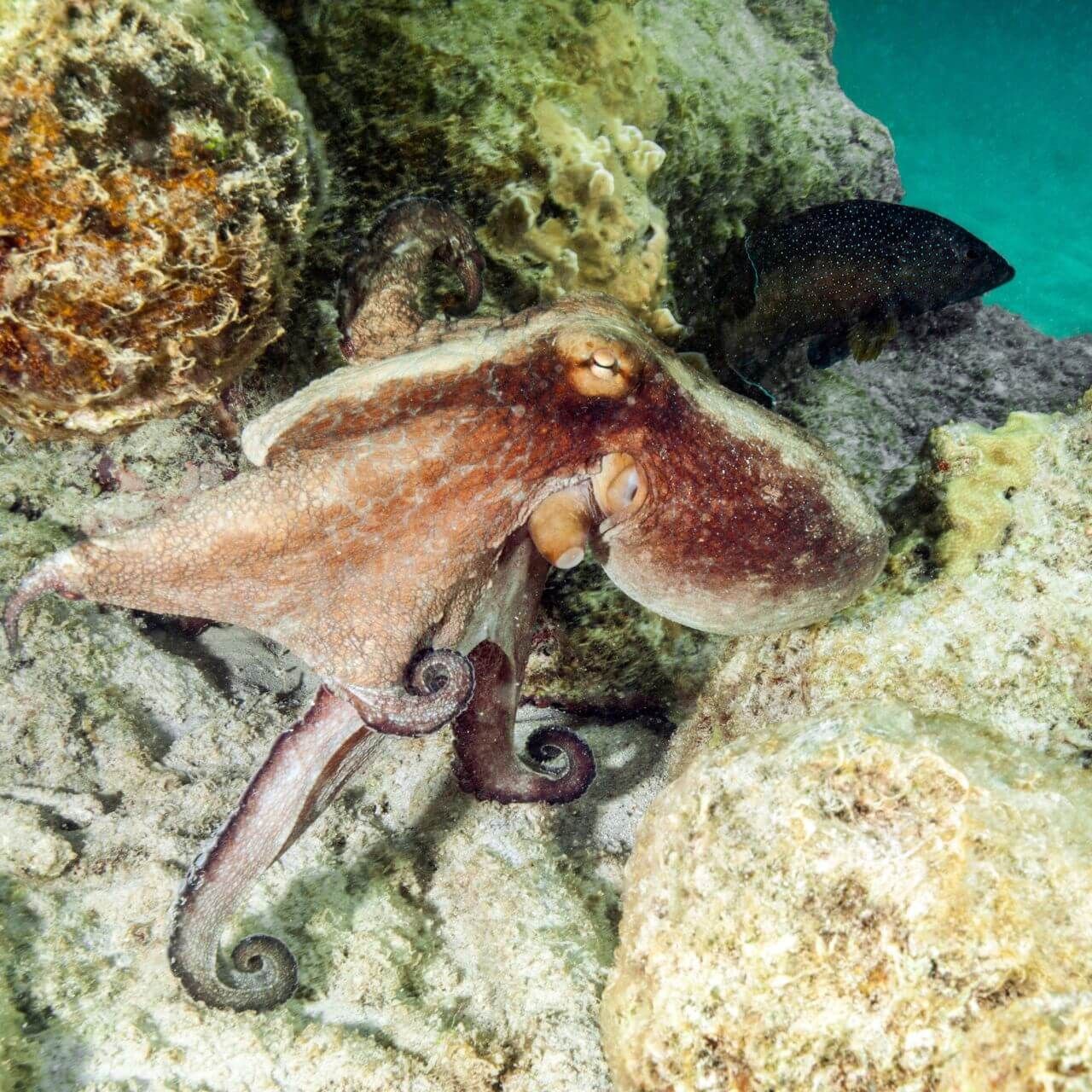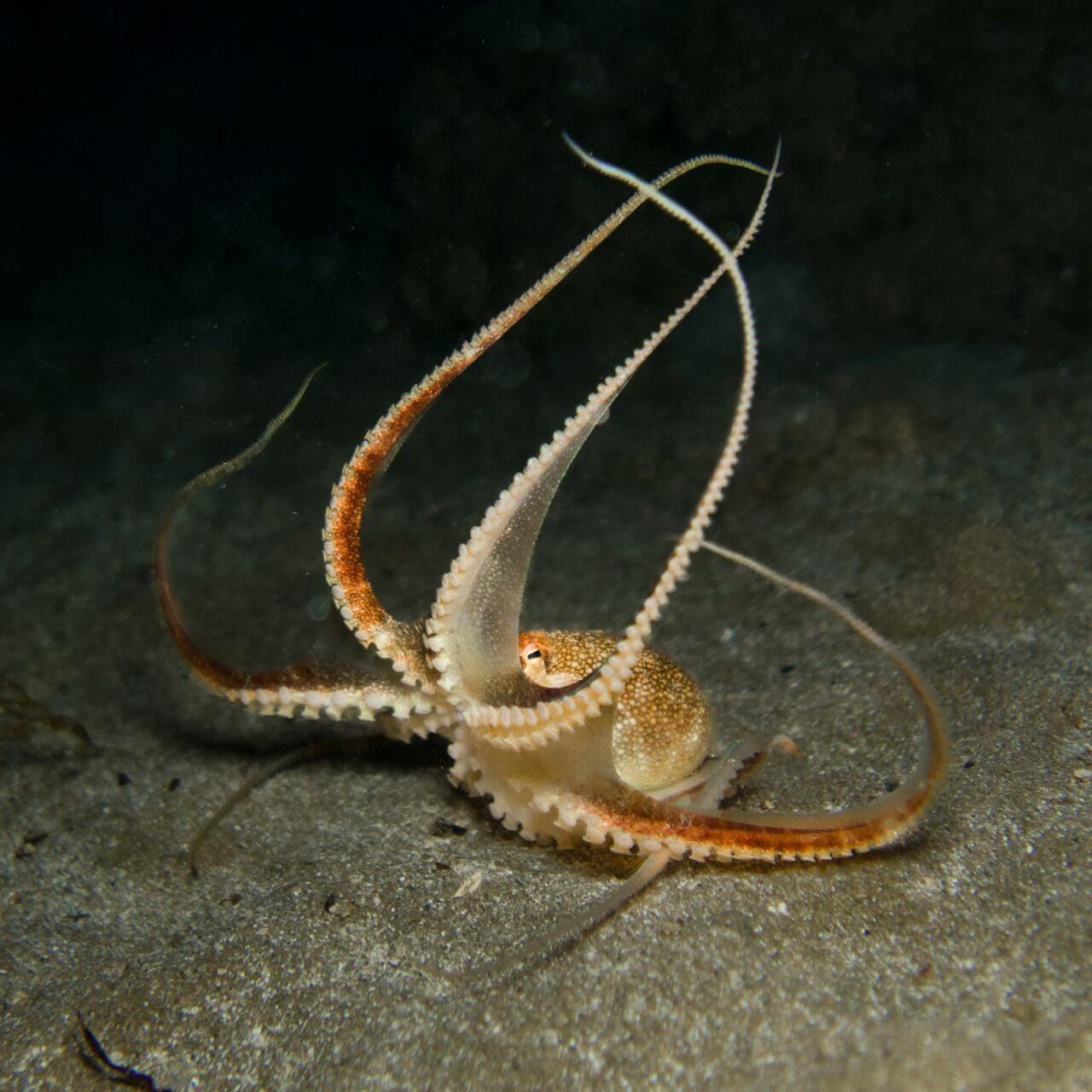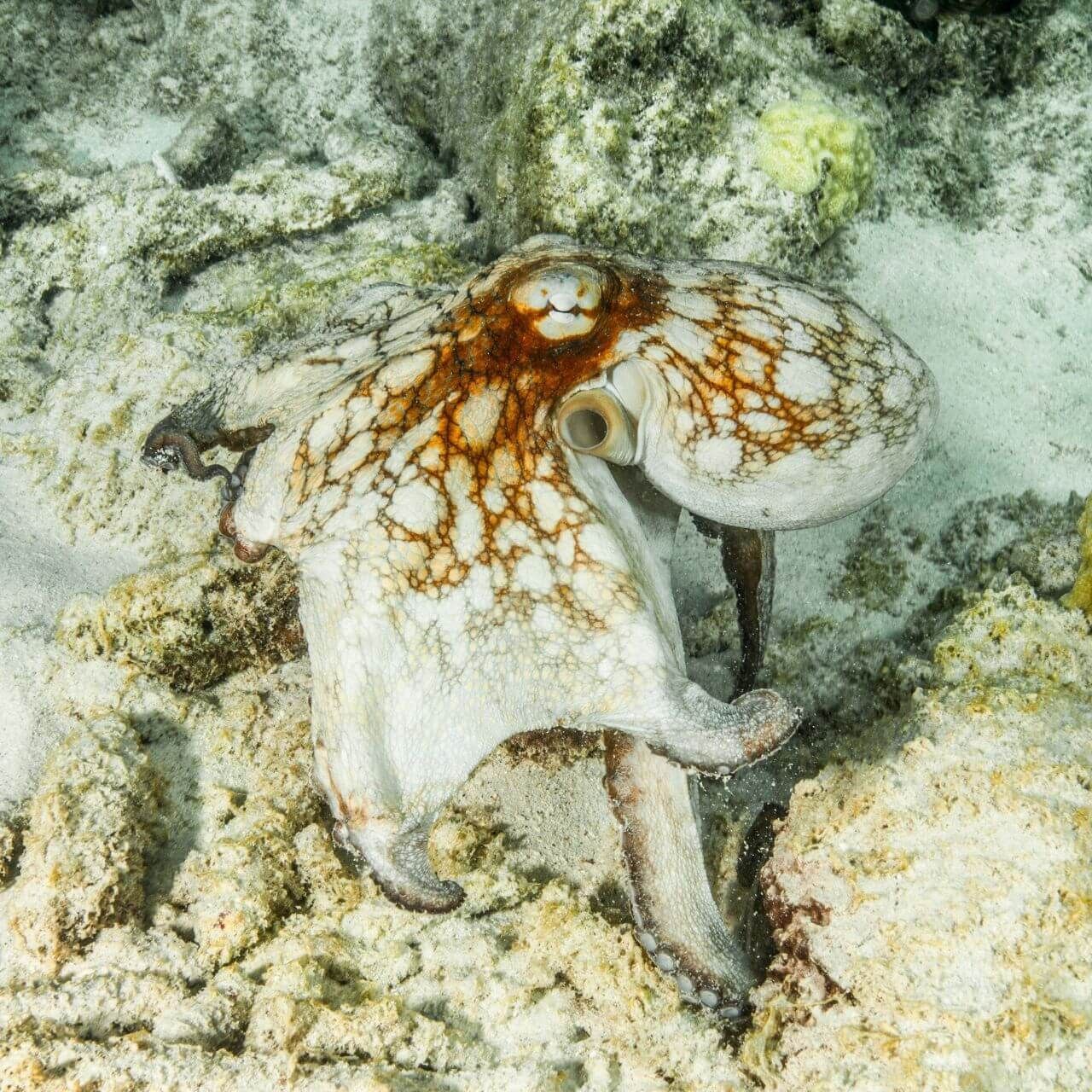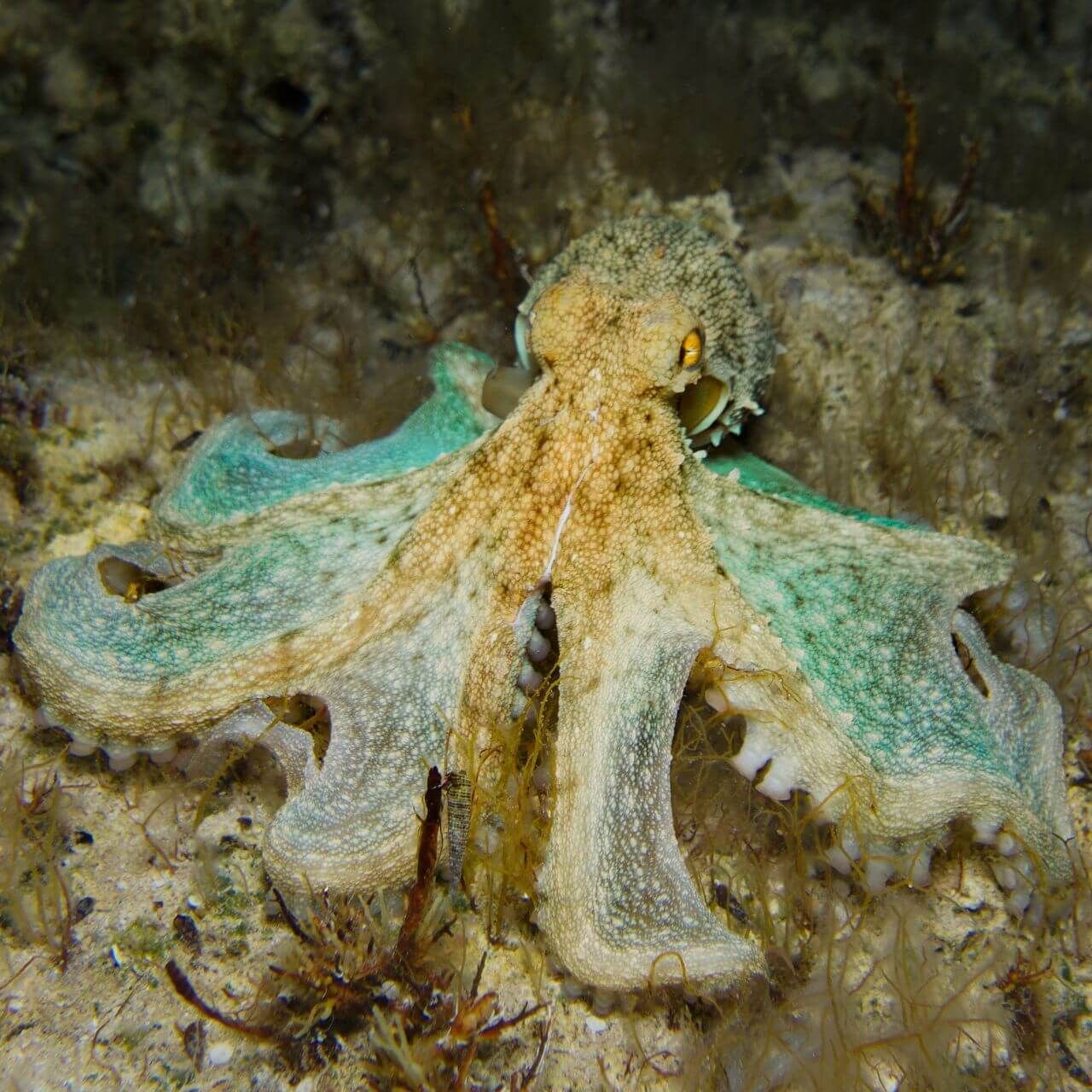Octopuses

Let's Learn About Octopuses
Word of the Week
Cephalopod
Cephalopods are a class of invertebrates that includes octopuses, squids, cuttlefish, and nautiluses.
There are about 650-700 species classified as cephalopods. Most species have a large head called a mantle and arms or tentacles used to move, smell, and feed.
Fast Facts

Where do octopuses live?
Octopuses live in nearly every type of ocean habitat.
Octopuses can be found in coral reefs, kelp forests, tidepools, the deep sea, and more. They live in all of the world's oceans. Their diet and behavior are different based on where they live.
What do octopuses eat?
All octopuses are venomous carnivores.
Using their parrot-like beak, octopuses eat animals like fish, crabs, shrimp, worms, and even other cephalopods. Most species have weak venom, but some species, like the blue-ringed octopus, have venom that can be deadly to humans.


What traits do octopuses share?
Octopuses are an order of animals that...
- Are invertebrates (they have no backbone).
- Have 8 arms and a beak-like mouth.
- Have excellent vision.
- Are highly intelligent.
- Have the ability to change color, texture, and shape.
How many octopuses are there?
Scientists estimate there are about 300 species of octopuses.
We are still learning a lot about octopuses and their diversity because they live in some very hard-to-reach places, like the deep sea. Because of this, we can't say for sure exactly how many species of octopuses exist!

Species Spotlight
Blue-Ringed Octopus
Hapalochlaena ssp.
Don't be fooled by its small size and bright colors, the blue-ringed octopus is one of the most dangerous animals in the ocean! They use their venom to catch prey and protect themselves against predators. If threatened, this small octopus's first instinct is to swim away. If it cannot, it will stand its ground and flash yellow inside its blue rings to confuse and distract predators. If this doesn't work, the blue-ringed octopus will defend itself with its powerful venom.
There are four species of blue-ringed octopus. All four species are found in warm, shallow water in the Indian and Pacific Oceans around coral reefs and tide pools. Blue-ringed octopuses spend most of their time hiding in cracks in reefs and rocks. They pile rocks to block the entrance to stay hidden from predators. They leave their hiding place at night to feed on fish, crabs, and shrimp. Blue-ringed octopuses also leave the safety of their hiding place when looking for a mate. They only mate once in their life. Females produce about 50 eggs and carry them under their arms until they hatch. Like other octopuses, the blue-ringed octopus dies after breeding. Their average lifespan is about 2 years.
Conservation Corner
Lifelong Learning
One of the coolest parts about science, especially wildlife science, is there is always something new to discover. There are new places to explore and new species to uncover and, as technology improves, so does science!
As scientists enter parts of rainforests we've never explored, new species are discovered.
As scientists develop deep sea submarines, we can see parts of the ocean and animals (like octopuses!) we never knew existed.
As scientists develop new ways to test DNA, we might find that an animal we thought was one species is actually two!
Scientists are lifelong learners, they are always looking for something to discover and learn about. You can be a lifelong learner, too! An important part of protecting our planet is understanding that the planet is changing and we have a lot left to learn. By exploring new places and making new discoveries, we can figure out what parts of the planet and which animals need our help the most.
You can practice being a lifelong learner on a mission to save the planet every day. Continue learning about plants, animals, and habitats. Stay up-to-date on discoveries in nature. Make some discoveries of your own by exploring the environment around your home. By becoming a lifelong learner, you can play a big role in protecting the future of wildlife.
Octopus Organization
Determine if each statement below is true or false.
Octopus Challenge
In this challenge, you will explore the incredible adaptations that octopuses use to move, catch prey, and escape predators.
Beginner
Step 1: Color and cut out the octopus on page 1.
Step 2: Fill in the blank in all 8 boxes on page 2.
Step 3: Cut out each box and paste them to the octopus's arms.
Expert
Step 1: Color and cut out the octopus on page 1.
Step 2: Describe the purpose of each octopus trait in each of the 8 boxes on page 2.
Step 3: Cut out each box and paste them to the octopus's arms.
Learn More!
Glossary
Adaptation
The process by which a species becomes more fit for its environment over the course of several generations. It is a result of natural selection.
Camouflage
The ability for an organism to blend into their surroundings usually to hide from prey or predators.
Carnivore
An animal that eats other animals.
Cephalopod
A class of invertebrates that includes octopuses, squids, cuttlefish, and nautiluses.
Gills
The respiratory organ that allows cephalopods, fish, and other animals to absorb oxygen (breathe!) from water.
Ink
A dark-colored substance sprayed by some cephalopods. It is typically used to escape danger.
Invertebrate
An animal that has no bones.
Predator
An animal that hunts other animals for food.
Prey
An animal that is hunted and eaten by another animal.
Siphon
A pump-like body part used by cephalopods to push and pull water for breathing, moving, and spraying ink.
Species
A closely related group of animals with similar characteristics that are capable of reproducing (example: tigers).
Vertebrate
An animal that has a backbone.
Sign Up for our Newsletter
Stay up to date with new adventures, live classes, deals, and more!

Helpful Resources
*Please note we do not offer refunds for EdZOOcating Adventures memberships. We recommend you explore the 3-day free trial prior to subscribing!*





